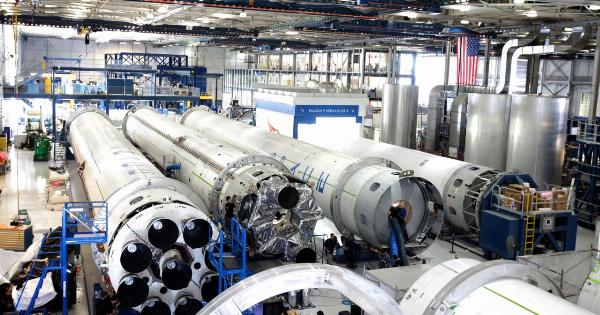During pregnancy, the development of the fetus within the womb is crucial for a healthy outcome. The intrauterine environment plays a significant role in shaping the growth and overall well-being of the baby.
Understanding the importance of intrauterine residual development is essential for expectant mothers and healthcare providers. In this article, we will explore the significance of intrauterine residual development and how it contributes to a healthy pregnancy.
1. What is Intrauterine Residual Development?
Intrauterine residual development refers to the growth and maturation of various organs and systems of the fetus within the uterus.
It encompasses the formation and refinement of vital structures such as the brain, heart, lungs, digestive system, and limbs. This development starts from the moment of conception and continues throughout the nine months of pregnancy.
2. The Role of Intrauterine Residual Development in Pregnancy
The intrauterine environment provides nutrients, oxygen, and protection to the developing fetus. It is a carefully balanced ecosystem that directly affects the growth and health of the baby.
The following are some key roles of intrauterine residual development in pregnancy:.
3. Formation of Vital Organs
During the first trimester, the fetal organs begin to form. Intrauterine residual development ensures that these organs develop adequately and reach their full potential.
For example, the heart starts beating and pumping blood, the brain develops billions of neurons, and the lungs begin to form the necessary structures for efficient respiration.
4. Establishment of the Placenta
The placenta is a temporary organ that develops during early pregnancy and serves as the interface between the mother and the fetus. It provides oxygen and nutrients to the developing baby while removing waste products.
Intrauterine residual development is crucial for the proper formation and functioning of the placenta.
5. Maturation of the Nervous System
The nervous system is one of the most complex systems in the human body.
Intrauterine residual development ensures that the fetal nervous system matures and develops all the necessary structures, including the spinal cord, brainstem, and cerebral cortex. This maturation process is essential for the baby’s ability to perceive and respond to the external environment after birth.
6. Development of the Immune System
An effective immune system is vital for a newborn’s protection against infections. Intrauterine residual development plays a significant role in the development and maturation of the fetal immune system.
It ensures that the baby is equipped with the necessary immune cells and antibodies to defend against pathogens.
7. Growth and Differentiation of Cells
Intrauterine residual development regulates the growth and differentiation of various cell populations in the developing fetus. These include cells that form the skin, muscles, bones, and other essential tissues.
The proper growth and differentiation of cells ensure that the baby develops a healthy and functional body.
8. Formation of Blood Vessels
Blood vessels are responsible for supplying oxygen and nutrients to all parts of the body. Intrauterine residual development guides the formation of blood vessels, ensuring that the fetus receives an adequate blood supply.
This process is critical for the overall growth and development of the baby.
9. Avoiding Intrauterine Residual Growth Restriction
Inadequate intrauterine residual development can lead to intrauterine growth restriction (IUGR), which refers to a condition where the baby fails to reach its full growth potential in the womb.
IUGR can have long-term consequences, such as a higher risk of developmental delays, chronic diseases, and even infant mortality. Therefore, optimizing intrauterine residual development is essential to prevent such complications.
10. Factors Influencing Intrauterine Residual Development
Several factors can influence intrauterine residual development. These include:.
Conclusion
Intrauterine residual development is of utmost importance for a healthy pregnancy and the long-term well-being of the baby. It ensures the proper formation and maturation of vital organs, as well as the growth and differentiation of cells.
Understanding the significance of intrauterine residual development helps mothers and healthcare providers take the necessary steps to optimize fetal growth and development during pregnancy.































